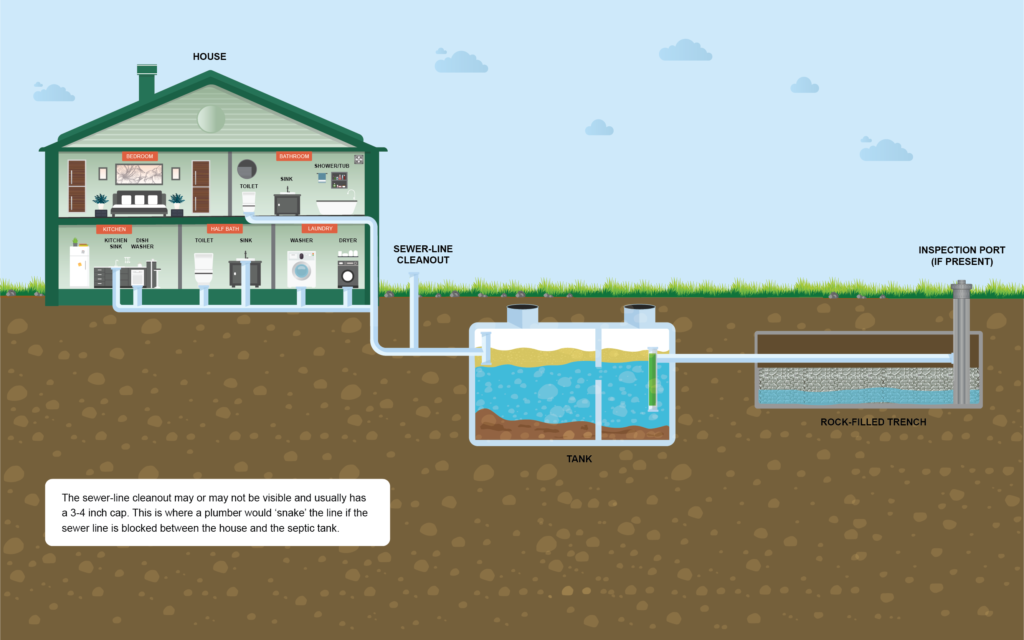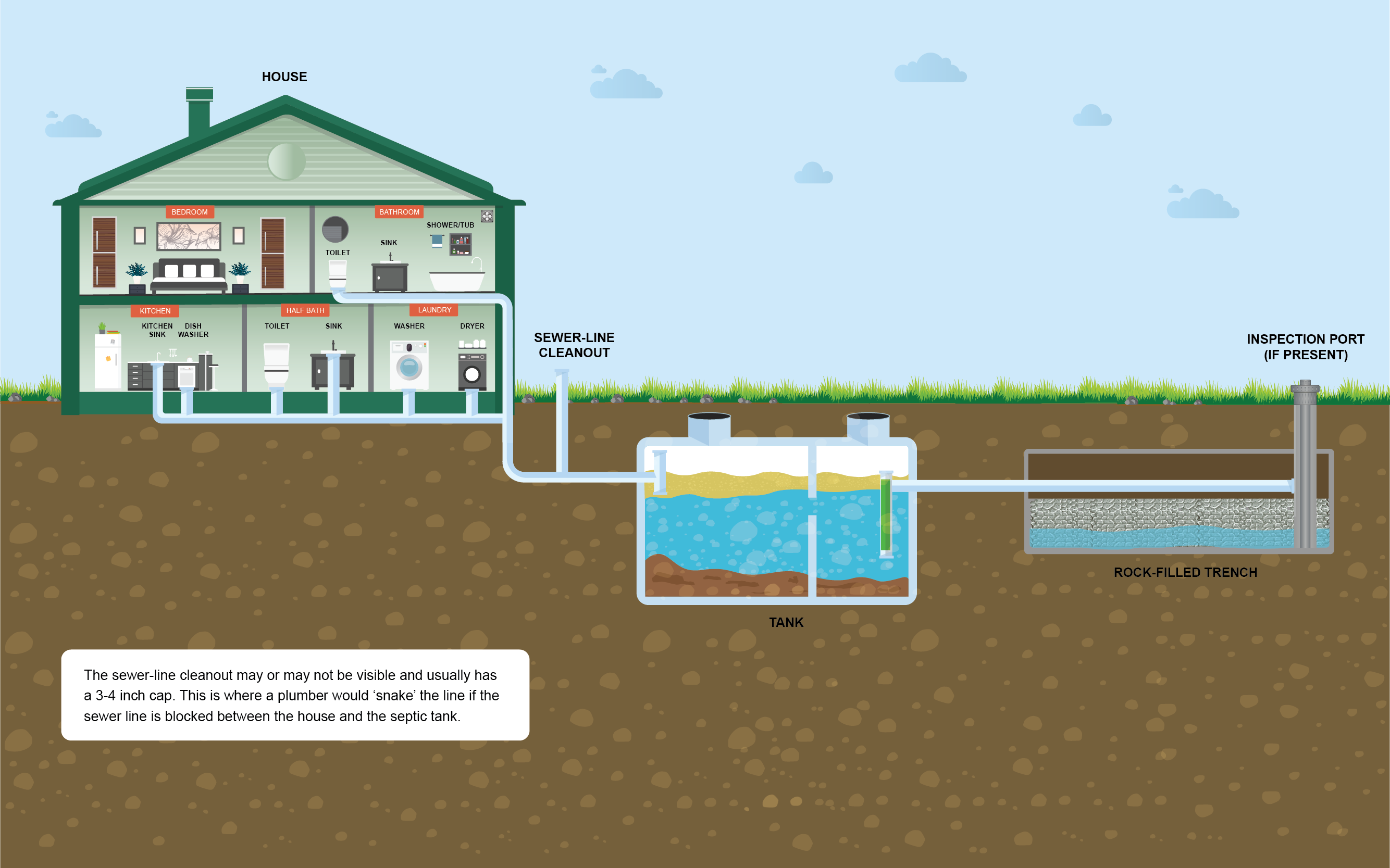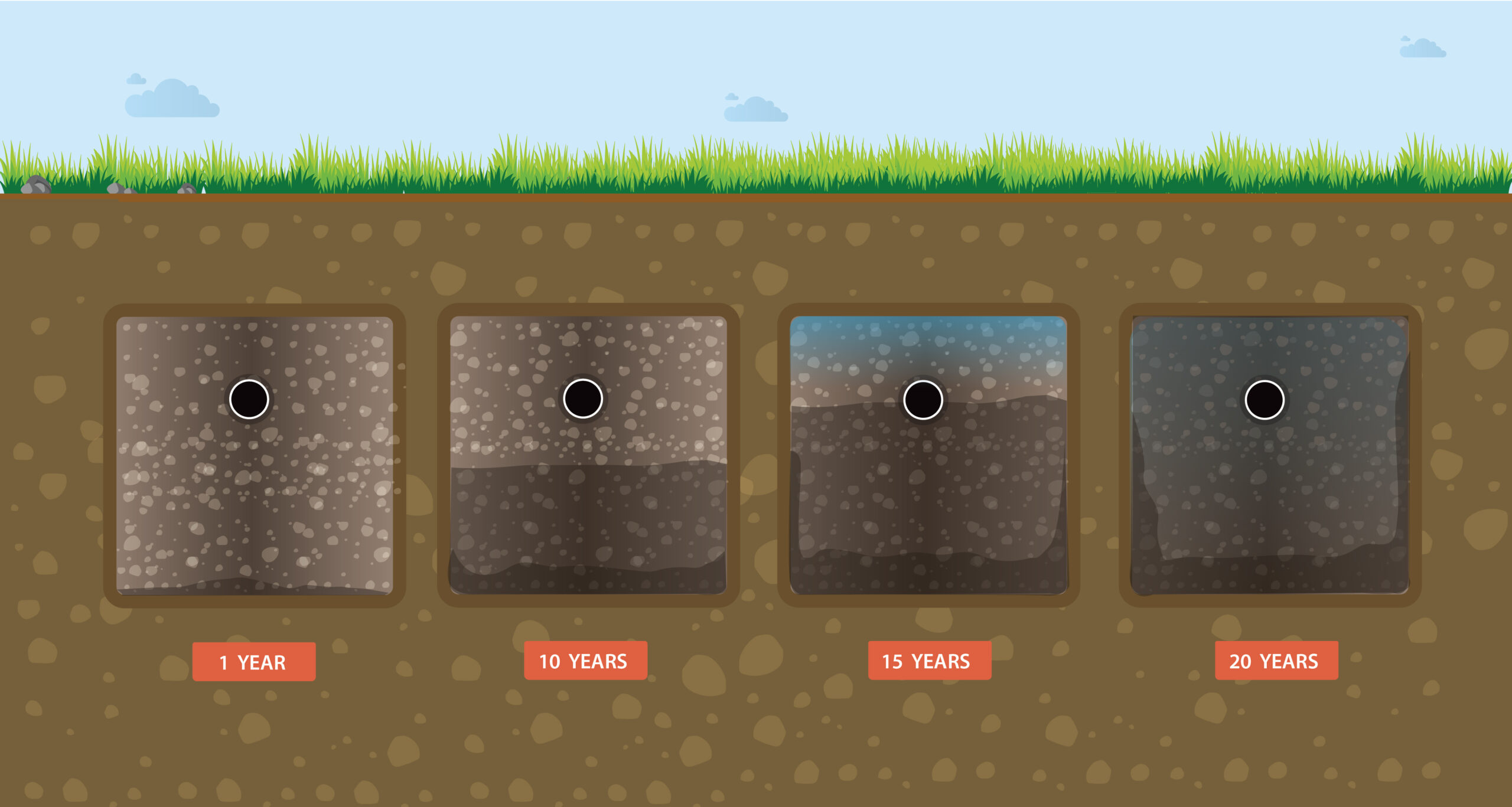If you’re considering buying a rural home or property in California’s Central Valley, chances are it won’t be connected to a municipal sewer system. Instead, it will likely have a septic system—a private, on-site wastewater treatment system that manages household waste.
Understanding how septic systems work, what to look for before purchasing a property, and how to maintain them is critical to avoid costly surprises. Here’s everything you need to know before signing on the dotted line.
How Do Septic Systems Work?
A septic system processes wastewater from your home, including water from toilets, sinks, showers, laundry, and dishwashing. It consists of:

✔️ A septic tank, which holds and separates waste—solids settle at the bottom, fats and oils float to the top, and liquid (effluent) flows out.
✔️ A drain field, which filters wastewater into the soil, allowing natural bacteria to break down contaminants.
✔️ Pipes and distribution lines, which direct wastewater from the home to the septic tank and drain field.
Properly maintained, a septic system can last 25–40 years, but a failing system can lead to backups, slow drains, unpleasant odors, and costly repairs.
Key Questions to Ask Before Buying a Property with a Septic System
1. When Was the Septic System Last Pumped and Inspected?
Septic tanks should be pumped every 3 to 5 years, depending on household size and water usage. If the current owner hasn’t maintained the system, you could be inheriting expensive problems.
📌 Get a septic inspection before you buy, or ask for maintenance records to verify proper upkeep.
2. How Old is the Septic System?
Septic systems have a lifespan, and an older system (25+ years) may be near the end of its usefulness. If the system is old, you’ll want to budget for potential repairs or a full replacement. Your septic inspection should test your leach field with a water “stress test” to see how well it takes water. This isn’t a definitive statement on the remaining useful life of your system, but it will inform you of whether or not the system is currently functioning properly.
3. What is the Size and Capacity of the System?
A septic system is sized based on the number of bedrooms in a home (not bathrooms). If the home has been expanded without upgrading the system, it might not handle the wastewater load efficiently.
✔️ A 1,500-gallon septic tank is typical for a three-bedroom home.
✔️ A smaller tank may require more frequent pumping.
✔️ A larger home may need a bigger tank and drain field.
4. Where is the Septic System Located?
Knowing the system’s exact location is essential for maintenance, landscaping, and avoiding damage. Septic tanks and drain fields should be away from driveways, structures, and large trees (whose roots can damage pipes).
📌 Request a septic map or as-built diagram from the seller or local health department.
5. What Type of Soil is on the Property?
Septic systems rely on soil to absorb and filter wastewater. Some soil types, like heavy clay, don’t drain well and can cause system failures. If you’re buying undeveloped land, a percolation test is required to determine if the soil can support a septic system.
Red Flags to Watch Out For
🚩 Sewage odors near the drain field – Could indicate a failing system.
🚩 Standing water or soggy ground near the septic tank – May signal an oversaturated or clogged system.
🚩 Slow drains or gurgling toilets – Could mean the tank is full or the system is failing.
🚩 No maintenance records – Suggests possible neglect and hidden problems.
Septic System Inspections: What to Expect
A septic inspection before buying a home is just as important as a home inspection. It ensures the system is functioning properly and helps you avoid thousands of dollars in unexpected repairs.
Types of Septic Inspections
🔍 Visual Inspection – A basic check to confirm there are no obvious issues like bad odors, standing water, or visible leaks.
🔍 Full Inspection – Includes pumping the tank, inspecting the baffles, checking for cracks, and evaluating the drain field.
📌 Hire a licensed septic professional to perform a thorough inspection before you buy. Learn more about Sequoia Pumping’s inspections here.
What If the Septic System Needs Repairs or Replacement?
If the inspection reveals minor issues, the seller may agree to fix them before closing. But if major problems exist (like a failing drain field or cracked tank), you may need to:
✔️ Negotiate the repair cost with the seller.
✔️ Request a price reduction to cover future repairs.
✔️ Walk away if the system is in poor condition.
💡 Replacing a septic system can cost $10,000–$30,000, depending on the size and location, so it’s crucial to factor this into your purchase decision.
Maintaining Your Septic System After Purchase
Once you own a home with a septic system, proper maintenance is key to avoiding costly repairs.
🛠️ Pump the tank every 3–5 years to prevent solids from building up.
🚫 Never flush wipes, grease, feminine products, or chemicals—they can clog and damage the system.
🚿 Conserve water—too much water use can overwhelm the system.
🌳 Keep the drain field clear—no parking, structures, or deep-rooted plants over it.
📞 Schedule regular inspections to catch small issues before they become big problems.
Final Thoughts
Buying a rural property in the Central Valley with a septic system can be a great investment, but only if you know what you’re getting into. By asking the right questions, scheduling a septic inspection, and maintaining the system properly, you can avoid costly surprises and enjoy your new home with confidence.
🚽 Need a professional septic inspection before purchasing a home? Call Sequoia Pumping LLC at (559) 233-2400 today!




